Northern White Hybrids Form a New Class of Wine
I was in Arizona years ago attending a wedding and I sought out some local wineries to satisfy my curiosity. It was fascinating seeing vineyards clinging to arid mountainsides, some bordered by impossible looking desert rivers. I recall thinking how different each of these wines would be, each in its own mini-climate.
Alcantara Winery is at the confluence of the Verde River and Oak Creek, Arizona’s only two all year waterways. I tasted their wine overlooking a terraced hillside vineyard above flowing desert waters in an opulent tasting room. It was a great experience.
However, I was disappointed to learn that most of the wine was imported from California and had little to do with Arizona agriculture. Eventually I purchased a bottle of California-grown Chardonnay for $22, far more that I usually pay for wine.
When I got home my son thought it was sound wine; pleasant, lovely oak aroma but unremarkable. ‘$22.00?” he asked, as though I’d gone crazy. He felt it could have been any cookie cutter California Chardonnay, perhaps a box wine like he is accustomed to drinking in the evening. Apparently that tasting room had done its job.
On my way home from Arizona, I decided to get off the freeway and visit one of Nebraska’s scattered prairie wineries. Prairie Vine Vineyards in Mitchell, Nebraska, almost in Wyoming, seemed unlikely enough and I stopped in to see what they were offering.
It was not necessary to ask my usual first question ‘which wines are locally grown” as they all were of little known estate grown hybrids, Elvira, Aurora, Foch, Chelois. What an interesting and obscure selection. I would get to see how Elmer Swenson’s St. Pepin is doing on the great western grasslands.
The St. Pepin was familiar; crisp, fruity, fragrant, fresh and delightful. It had no need of oak, as it had a unique, flowery aroma of its own. I was stunned to realize that this wine was unlike any white I’d found in Arizona. Except in a formal dinner atmosphere with seafood perhaps, it was in every way a better wine. It was nothing like the powerfully alcoholic, heavily oaked Chardonnays everyone has come to expect out of California. This St. Pepin settled upon me like a wine drinking epiphany.
In later days and at other wineries I found Elmer’s rich Brianna, savored the grapey fragrance of Edelweiss and delighted in the University of Minnesota’s aromatic and fruity La Crescent. Unlike a Chenin Blanc, however, or a White Zinfandel or Muscat each was unique and interesting. Eventually I realized we Midwesterners are producing a whole new class of white wines. Our Northern Hybrids are not just bringing grapes to cold regions where they had never prospered before but the climate is giving us a whole new class of wines as well.
Following are descriptions of some of these white Northern Hybrids;
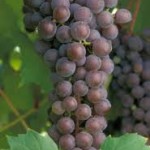

To add a note of drama to its history someone actually pruned off and stole the cane that originally exhibited the ‘gris” colored clusters. However, the thief did not take quite enough wood and the damaged cane still grew out the fortuitously mutated wood and this unique material was saved for us all. The culprit on the other hand has never been identified.
See related story: Frontenac Gris Moves Beyond Minnesota
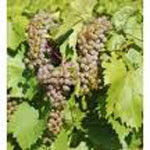

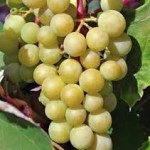

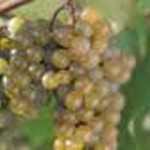

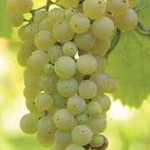

See related story: Brianna is Midwest’s New Tropical Fruit
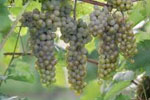

See related story: La Crescent: A Winemaker’s Grape
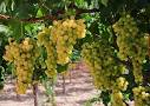 EDELWEISS — Originally selected as the ES#40 this was one of Elmer’s earliest hybrids. Tested in New England by fruit breeder, the late Elwyn Meader. He loved it and marketed it successfully as a table grape ‘White Concord”. Winery owner John Canepa planted it in the White Mountains of New Hampshire and was apparently the first to use it as a wine grape. It was he who named it ‘Edelweiss. It was released through the University of Minnesota without a patent in the 1970s as a table grape.
EDELWEISS — Originally selected as the ES#40 this was one of Elmer’s earliest hybrids. Tested in New England by fruit breeder, the late Elwyn Meader. He loved it and marketed it successfully as a table grape ‘White Concord”. Winery owner John Canepa planted it in the White Mountains of New Hampshire and was apparently the first to use it as a wine grape. It was he who named it ‘Edelweiss. It was released through the University of Minnesota without a patent in the 1970s as a table grape.
It languished in Wisconsin and Minnesota because of marginal hardiness but became established as a wine variety in Nebraska where it has become enormously popular. Liquor stores there report greater demand for Edelweiss wine than for any white to include any California Chardonnay, French Bordeaux or cut-rate Australian white. It is said to be close to that position in Iowa as well. It has won some prestigious ‘Best of show” awards in California and as a result has become an established and even revered wine grape in some areas.
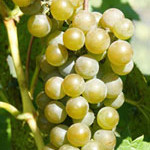

These are some of the white wines eastern winemakers can offer. They were developed to make grape growing and wine production feasible in cold climates where wine was not produced in past. Instead these grapes have mated with our climate and given us a class of wines that the public loves and only we can produce.
John Marshall is the owner of Great River Vineyard and Nursery in Lake City, Minnesota. For information see: Great River Vineyard


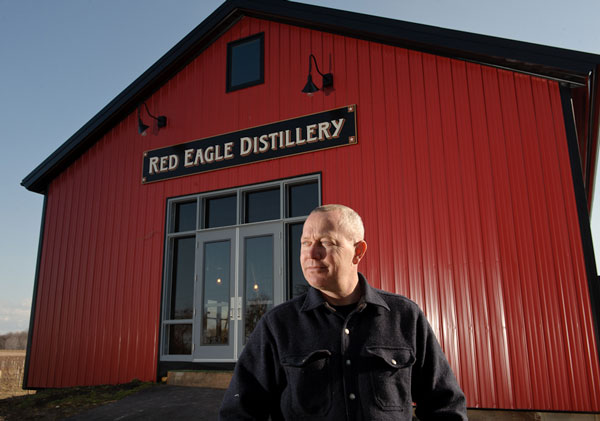
Great article, John. It’s gratifying to see these U of MN/Swenson varieties being planted so widely, and making tasty wines. I just wish someone here in Ohio would plant some Edelweiss…..it’s one of my favorites. 🙂
Loved your story John and the sharing of your experience during travels. I agree, the cold-hardy white wines are surprisingly good, refreshing and a lovely alternative to the wines of the vinifera world. I love what is happening with the “New American Viticulture”.